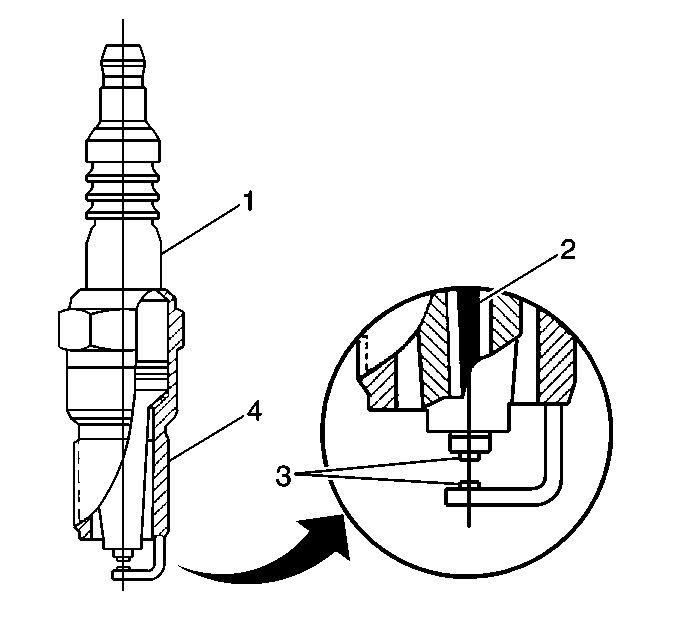Ignition System Description 3.5L Twin Cam V6 LX5
For information on the electronic ignition, refer to Electronic Ignition (EI) System Description in Engine Controls - 3.5L.
For component description, refer to Electronic Ignition (EI) System Description in Engine Controls - 3.5L.
Ignition System Description 3800 V6 L36
Electronic Ignition (EI)
For information on the electronic ignition, refer to Electronic Ignition (EI) System Description in Engine Controls - 3.8L.
Ignition (IC) Control Circuit
For information on the IC circuit, refer to Electronic Ignition (EI) System Description in Engine Controls - 3.8L.
Ignition Timing
For information on ignition timing, refer to Electronic Ignition (EI) System Description in Engine Controls -- 3.8L.
Spark Plugs

Extended Life Spark Plug (Typical)
- Spark Plug Identification Number Location
- Copper Core Centerwire
- Platinum
- Nickel Plated Shell
Resistor type, platinum tipped, tapered seat spark plugs are used on this engine. No gasket is used on these tapered seat spark plugs. Refer to Spark Plug Usage for spark plug type and gap size. When replacing spark plugs, use only the type specified. Normal service is assumed to be a mixture of idling, slow speed, and high-speed driving. Occasional intermittent high-speed driving is needed for good spark plug performance. It gives increased combustion heat, burning away carbon or oxides that have built up from frequent idling, or continual stop and go driving. Spark plugs are protected by insulating boots made of special heat-resistant materials, which cover the spark plug terminal and extend downward over a portion of the spark plug insulator. These boots prevent flash-over, which causes engine misfiring. Do not mistake corona discharge for flash-over, or a shorted insulator. Corona is a steady blue light appearing around the insulator, just above the shell crimp. It is the visible evidence of a high-tension field and has no effect on ignition performance. Usually it can be detected only in darkness. This discharge may repel dust particles, leaving a clear ring on the insulator just above the shell. This ring is sometimes mistakenly regarded as evidence that combustion gases have blown out between the shell and the insulator.
